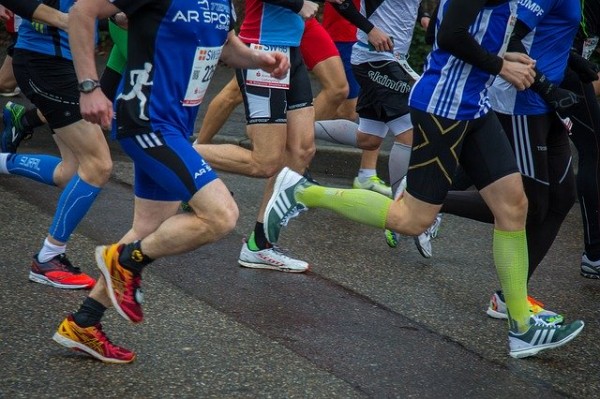Runners Unintentionally Obtain Muscle Patterns from Training: A Study on the Nervous System

According to the study, some experienced runners who have unexpectedly low effectiveness were actually running with the 'efficiency-reducing merging patterns.'
In a joint study by the Chinese University of Hong Kong, Hong Kong Polytechnic University, and Western Sydney University, researchers recently revealed the complex functions of the human nervous system when regulating one's ability to run.
In their collaboration, the researchers looked at several groups of healthy volunteers, including preschoolers, physically inactive adults. They experienced runners to investigate how the nervous system controls running at different stages of training and age.
The participants partook in a range of running exercises—overground or treadmill run.
The authors recorded the volunteers' electrical activities from multiple muscles, including the force that their body exerted onto the ground.
After they collected data, the research team utilized a sophisticated machine learning algorithm to determine fixed co-activation patterns of various muscles called "muscle synergies" inserted within the muscle data.
ALSO READ: A Benefit of Exercise That You Probably Haven't Heard Much About
'Muscle Synergies'
The research findings which the Nature Communications journal published specified, "The human nervous system is equipped with a mechanism," with the ability to flexibly regulate the motor commands used for running according to the body's state, as well as the previous running experience of an individual.
According to lead author and CU Medicine professor Vincent Chi Kwan Cheung, as muscle activities originate from the spinal cord and brain, muscle synergy provides a hint on the manner the nervous system generates motion.
The lead author added that muscle synergies are perceived to be the movement's neural building blocks, working like basic alphabets that the nervous system can flexibly recombine to lead to varied behaviors.
The goal of this study was to evaluate how the building blocks for running themselves may vary in age and training groups.
Preschooler Synergy
Pediatric physical therapist and associate professor, Chao-Ying Chen, from the Department of Rehabilitation Sciences at PolyU, explained the vital considerations for children, who typically have body-builds that have a substantial difference from those of adult individuals. "With muscles of weaker strengths and developed balance in posture," said Chen.
The team also found that some of the preschoolers may progressively identify themselves by working into synergies, including fewer muscles over the years of development.
From the biomechanical outlook, the synergies of preschoolers seem to be well-suited for running with body-builds that are less mature.
Meanwhile, for adult runners, training may result in muscle synergies reorganization, too. The team discovered that training for months to years might induce integration of specific pre-training muscle synergies into those consisting of more muscles.
According to the study, among the adult participants, the existence of specific patterns of synergy merging is linked to either improved or reduced efficiency in an energetic run.
DON'T MISS THIS: Coffee May Stop the Occurrence of Irregular Heartbeats, Research Says
Uncovering Muscle Patterns
According to Western Sydney University's Professor Roy Tsz Hei Cheung, who started contributing to the study when he was an associate professor at PolyU's Department of Rehabilitation Sciences, it is notable that some experienced runners who have unexpectedly low effectiveness were actually running with the efficiency-reducing merging patterns.
The evaluation reveals some muscle patterns runners unintentionally obtained from their training. However, they would eventually need to learn how to defeat the said patterns before becoming "the true elites."
IN CASE YOU MISSED IT: Chocolate Cake for Breakfast to Lose Weight? Here's What You Need to Know
Check out more news and information on Fitness and Neurology on MD News Daily.
Sep 11, 2020 12:27 AM EDT




